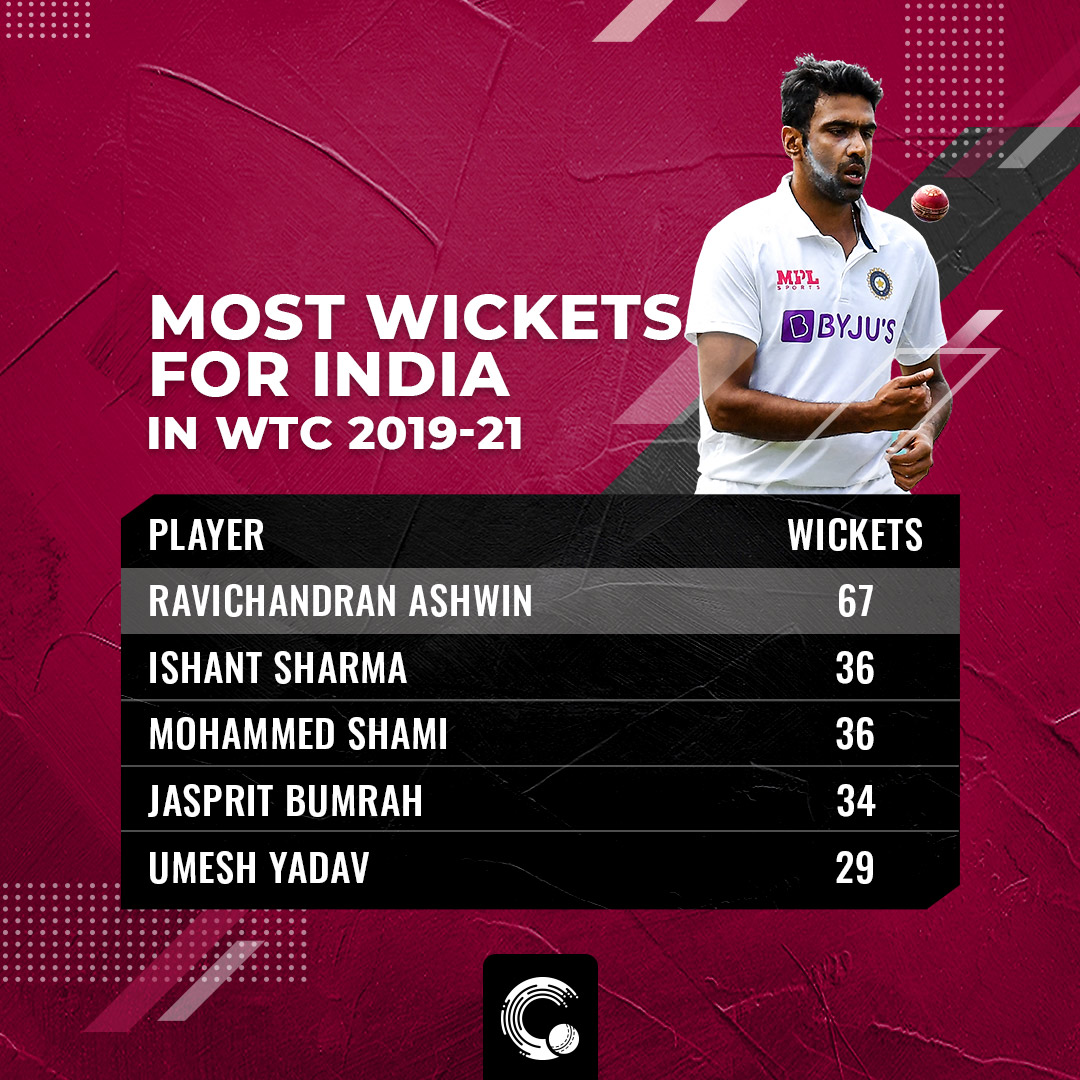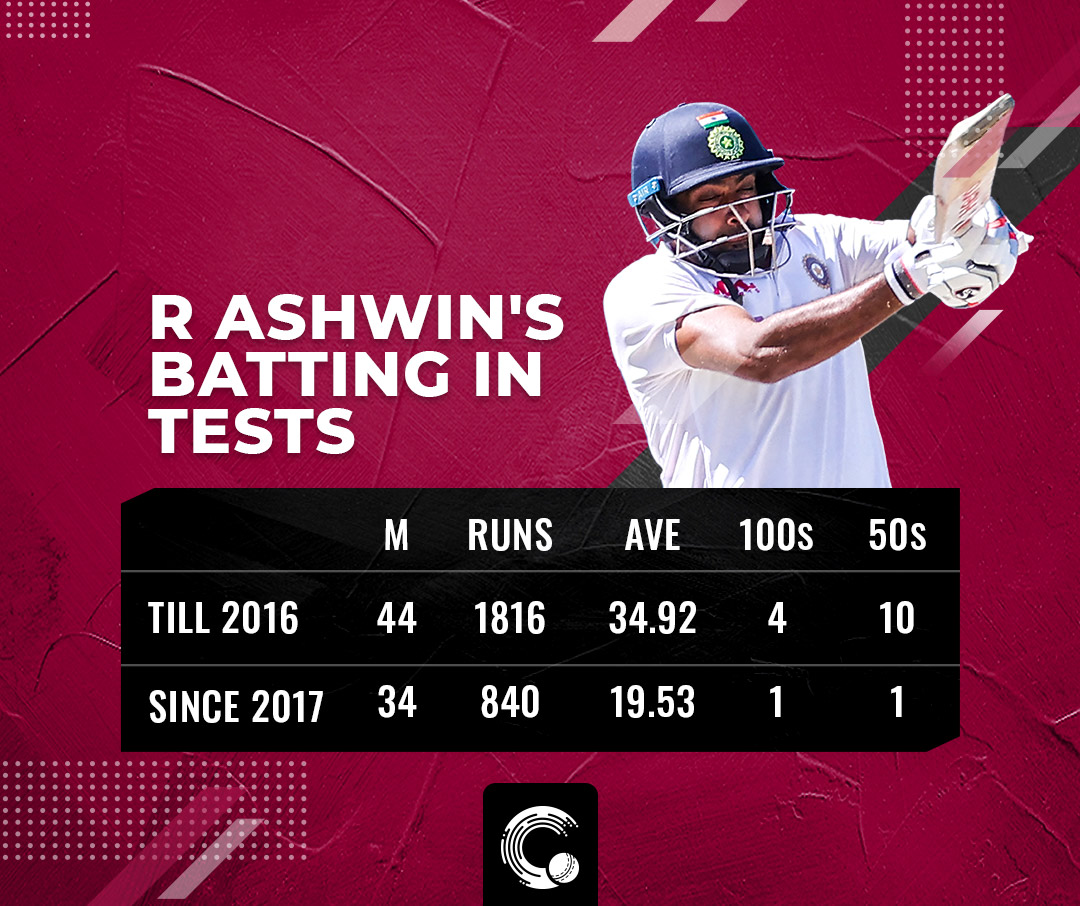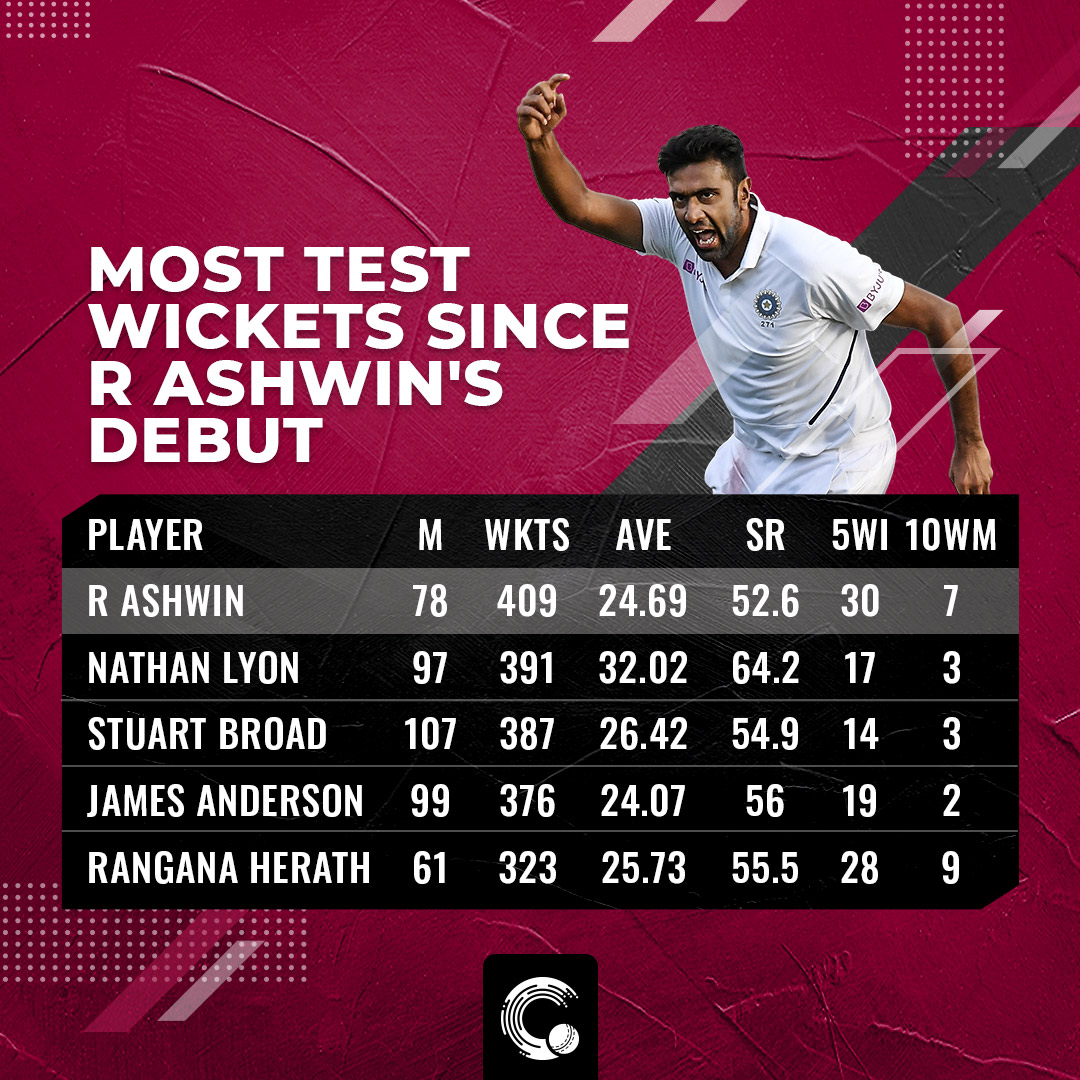 WTC DIARIES
WTC DIARIESSince making his Test debut in 2011, Ravichandran Ashwin has been an indispensable cog in the Indian team. He may no longer be in the reckoning in limited-overs cricket, but has been a crucial part of the Indian Test team over the years.
India play the World Test Championship (WTC) final in Southampton with Ashwin as their leading wicket-taker with 67 scalps at 20.88 from 13 Tests. This despite not finding a place in three Tests in the cycle – two against West Indies and one against New Zealand. Not to forget, he also missed the Brisbane Test against Australia earlier in the year due to injury.

Going back to India’s first series in the WTC – against West Indies – an opposition Ashwin has tormented with both bat and ball over the years - Ravindra Jadeja was preferred ahead of Ashwin for the two-Test series. Jadeja was given the go-ahead not because he had better skill sets, but for the fact that he could be a more rounded option on those damp West Indian pitches.
Head coach Ravi Shastri had also pointed out that Jadeja was preferred because of his fielding and was ‘batting like hell’.
"The reason why we picked Jadeja in the first Test was, in case we fielded and the track was damp, with his pace he would have made life a little awkward for the batsmen. He could have been used even on day one in the first session of play. But it's tough to keep a world-class guy like Ash out,” Shastri explained.
A couple of takeaways from Shastri’s comments is the fact that India have someone other than Ashwin who could be the lone spinner in the team and another – the more important one – is the batting facet of the game.
Till 2016, Ashwin could be termed a genuine allrounder for he also contributed immensely with the bat. From his debut till the end of 2016, Ashwin had 248 wickets at 24.96 and with the bat, he scored 1,816 runs at 34.92 – an average difference of 9.95. Not to forget, he also had 10 fifties and four centuries to his name.
However, since then, Ashwin’s batting dropped and coincidentally, Jadeja’s stock rose due to his crucial knocks down the order that has seen him average over 50 in Tests. But Ashwin since 2017 has been as consistent as he was previously with the ball, though crucially his batting has taken a huge hit, scoring just 840 runs at 19.53 with an average difference of a massive -4.73.

However, through his recent performances with the bat in Sydney and Chennai, Ashwin has shown that he still has something to offer with the bat.
With him having not played limited-overs cricket for India for almost four years, Ashwin has no doubt put in the hard yards with the ball. Stuart Broad and James Anderson have played two limited-overs matches since the 2015 World Cup till date, and they are the leading wicket-takers in Tests among active cricketers.
Despite playing ODI and T20Is for the first six years, Ashwin’s dominance in Tests with the ball never reduced. The fact that no one has picked up more wickets than him since his Test debut is a good indicator of his prowess.  Coming to the WTC final, the fact that New Zealand have as many as three left-handers among their top five, works in Ashwin’s favour. Out of his 14 wickets in England – 12 of those have been left-handed batsmen at an impressive average of 18.1.
Coming to the WTC final, the fact that New Zealand have as many as three left-handers among their top five, works in Ashwin’s favour. Out of his 14 wickets in England – 12 of those have been left-handed batsmen at an impressive average of 18.1.
He has been excellent against left-handers in the WTC as well, picking up 26 wickets at 14.4 against them. An added bonus is that Ashwin got the wickets of Ben Stokes, Moeen Ali and Sam Curran – all lefties – the last time he played in Southampton.
However, despite playing for India for close to 10 years, the fact that he does not have a single five-wicket haul in any of the SENA countries is truly baffling. However, in countries where fast bowlers are usually the ones who dominate proceedings, Ashwin plays more of a second fiddle – much like the pacers do in subcontinental conditions.
Sixty-three wickets at 40.11 in such conditions does not infuse a lot of confidence, but some of his best performances there have come since 2017, a period in which he has struck 39 times at 29.97. While this facet of Ashwin’s game is much-talked-about, it is not an alarming one, considering that the focus will be on the Indian pacers in this game and also the upcoming five-Test series against England. The spotlight might not be on him as much as it would have been in India or in the subcontinent.
That could certainly work in Ashwin’s favour as he looks to hand India their first major ICC trophy under Virat Kohli.